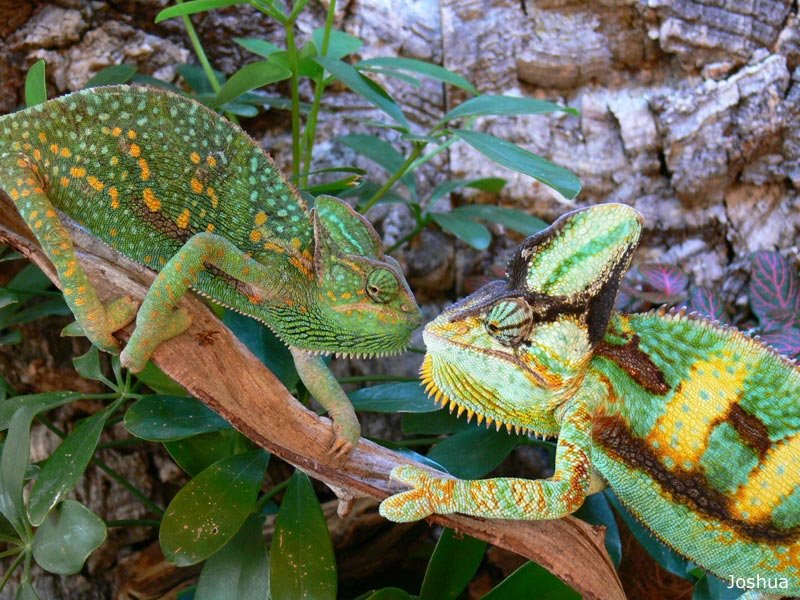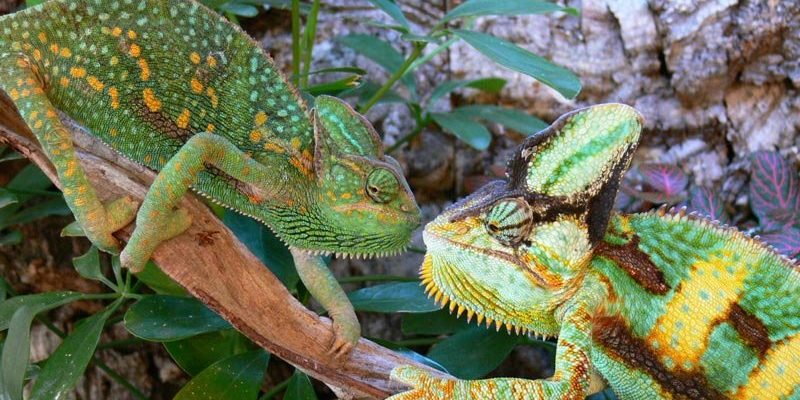
Now, before we get into the nitty-gritty, let’s clear up one thing: taking care of a veiled chameleon, or even just learning about it, can be a rewarding experience. They might seem complicated, but understanding their world can be as fascinating as watching them change colors. So, grab a cup of coffee, and let’s explore the top ten facts about these colorful critters!
1. Color Changing Abilities
One of the most famous features of the veiled chameleon is its ability to change colors. But here’s the thing—it’s not just for camouflage. These little guys can transform their hues for various reasons, like expressing emotions or communicating with other chameleons. For instance, if a veiled chameleon feels threatened, it might turn a darker shade to ward off predators. Conversely, when they’re excited or ready to mate, they can display vibrant colors like bright greens or yellows. It’s like they have their own mood ring!
This color change is controlled by specialized cells in their skin called chromatophores. When these cells expand or contract, they reveal different pigments beneath the skin, creating that stunning color change we all admire. So, next time you see a veiled chameleon shifting shades, know it’s more than just a party trick—it’s a complex communication method.
2. Unique Physical Features
Veiled chameleons are truly a sight to behold. They boast a distinct “veil” or casque that protrudes from their heads, giving them their name. This feature isn’t just for show; it helps them absorb sunlight, which is critical for regulating their body temperature. It’s like they have their own personal sunroof!
Additionally, they have long, zygodactylous feet—pretty fancy terminology for their unique toe structure. These toes are split into two groups, which allows them to grip branches securely. Imagine climbing a tree with your toes split like that—pretty handy for navigating their arboreal habitats!
3. Habitat and Behavior
The natural habitat of the veiled chameleon is quite specific. They thrive in the warm, arid environments of the Arabian Peninsula, where they can be found basking in trees or shrubs. This preference for climbing means they’re often found high up, where they can spot both prey and potential threats.
In the wild, these chameleons are primarily solitary creatures. They’re not big fans of sharing their space, which means they can be a bit territorial. If another veiled chameleon wanders too close, prepare for some colorful displays and possibly even some squabbling. It’s like watching a diplomatic standoff, but with a lot more color!
4. Diet and Feeding Habits
Feeding a veiled chameleon can be both a joy and a challenge. They are primarily insectivores, which means their diet mainly consists of bugs. Crickets, roaches, and silkworms are just a few of the delicacies they enjoy. Here’s the thing: their eyes can move independently, allowing them to track prey with incredible precision. Imagine being able to look in two directions at once while hunting down your lunch!
When it’s time to eat, they use their long, sticky tongues (which can be almost as long as their bodies!) to catch insects with remarkable speed. This method of feeding is not just efficient; it’s also fascinating to watch. You might find yourself rooting for them during mealtime!
5. Lifespan and Mating
The lifespan of a veiled chameleon can vary, but they typically live between 5 to 8 years in captivity, with some even reaching up to a decade if cared for properly. Just like any pet, the key to extending their life is proper care, including a balanced diet, appropriate habitat conditions, and regular veterinary check-ups.
When it comes to mating, male veiled chameleons take on fierce competition. Males display bright colors and puff out their bodies to attract females. During courtship, they perform elaborate rituals, showcasing their vibrant colors and even bobbing their heads—a sort of chameleon dance! Once a female chooses a mate, she’ll lay around 20 to 30 eggs, which she buries in the ground. It’s a big responsibility for such a tiny critter!
6. Interesting Behaviors
Veiled chameleons have some quirky behaviors that can be downright entertaining. For instance, they often develop a habit of basking under a heat lamp, soaking in the warmth. Picture yourself lounging in the sun with a good book—this is their way of raising their body temperature.
Moreover, the way they interact with their environment is quite unique. They use their eyes to survey their surroundings, and their incredible depth perception makes them expert navigators in their arboreal homes. Ever seen someone acing a game of darts? That’s how precise they can be when pouncing on prey!
7. Veiled Chameleons as Pets
Many people are drawn to veiled chameleons as pets due to their vibrant colors and fascinating behaviors. They can be rewarding companions, but it’s essential to understand their needs fully. A well-maintained habitat includes proper lighting, humidity, and space for climbing—think of it as creating a mini jungle just for them.
It’s also important to handle them gently. Unlike some pets that enjoy being cuddled, veiled chameleons often prefer to observe from a distance. Building a bond with them takes time, as they are naturally shy creatures. But with patience, you’ll find they can become quite interactive!
8. Conservation Status
Finally, it’s important to touch on the conservation status of the veiled chameleon. While they are currently not classified as endangered, their habitats face threats from urban development and habitat destruction. Just like many creatures, they depend on healthy ecosystems to thrive.
Being mindful of their conservation status helps us appreciate the beauty of these reptiles and the ecosystems they inhabit. If you’re passionate about the veiled chameleon, consider supporting conservation efforts aimed at preserving their natural habitats.
In conclusion, veiled chameleons are not just remarkable for their appearance; they offer insights into the rich tapestry of life in our world. Whether you’re considering one as a pet or simply enjoying them from afar, there’s no denying that these chameleons are full of surprises. So, next time you see one, remember the fascinating facts that make them who they are!

